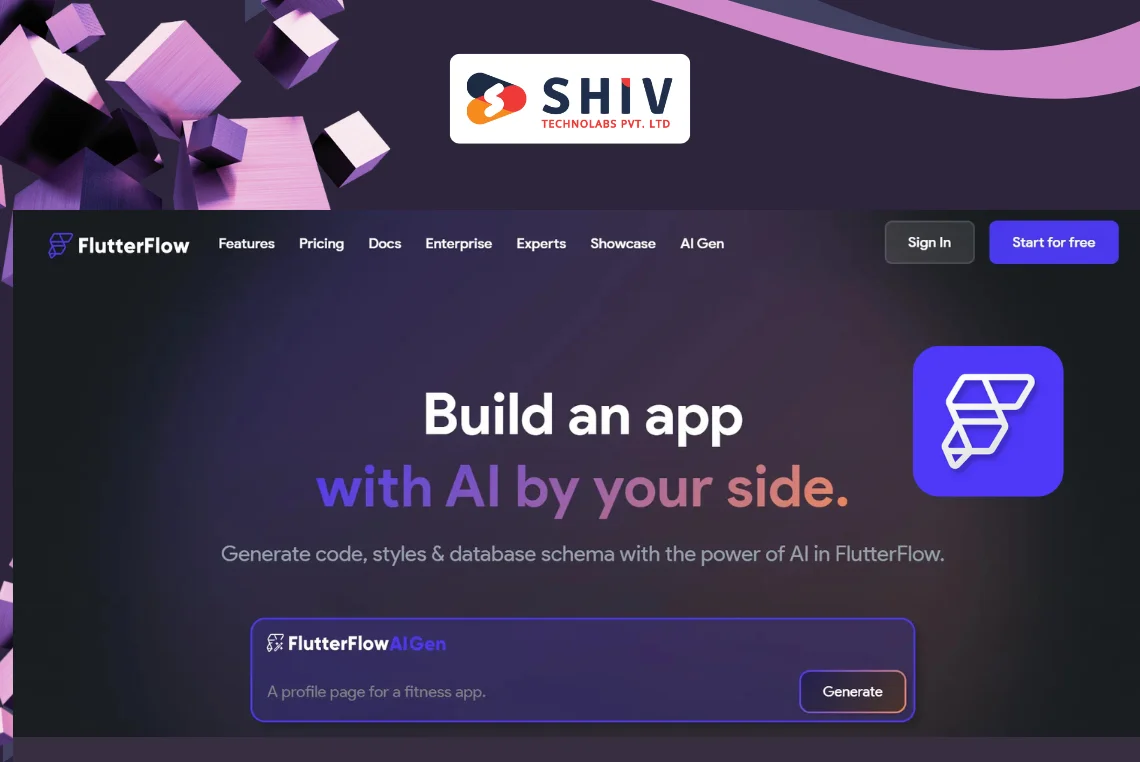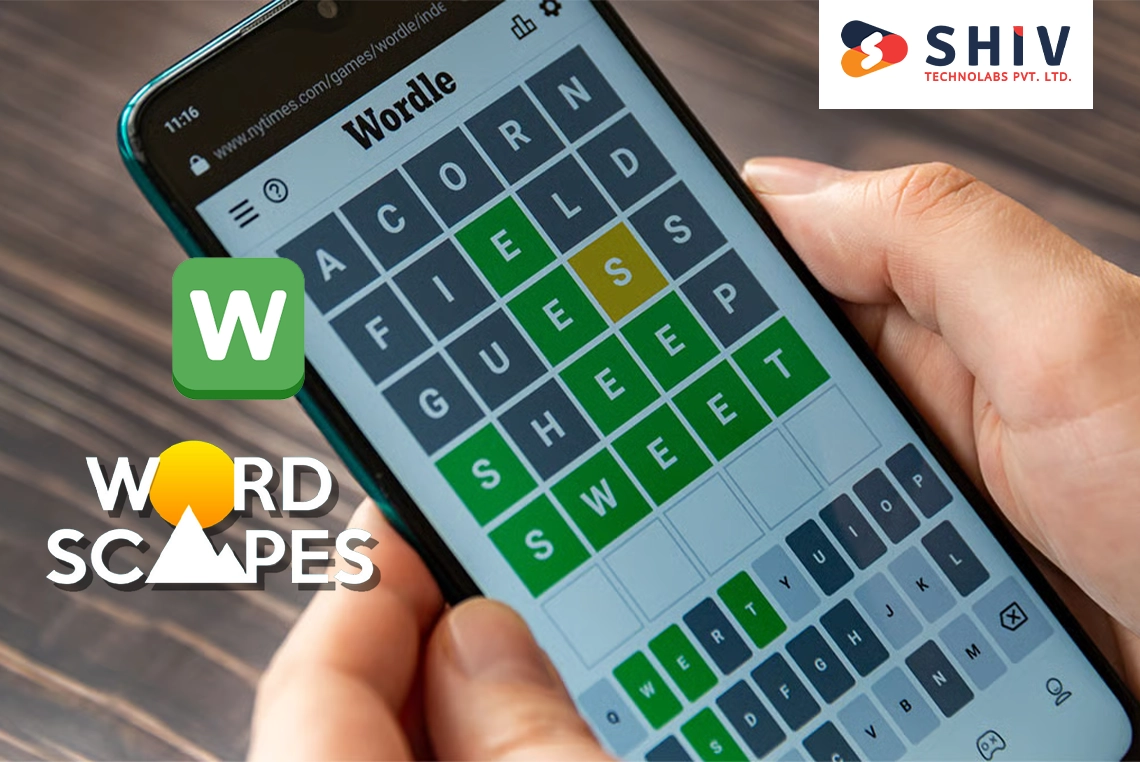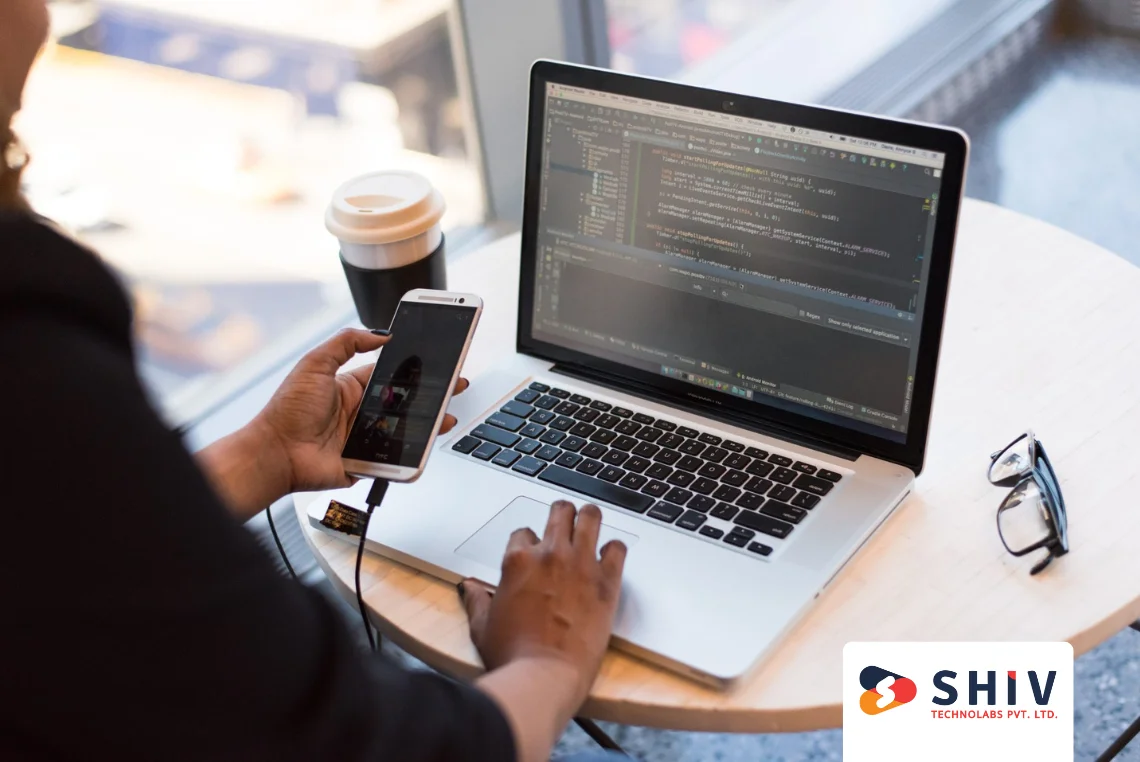Table of Contents
In today’s rapidly advancing technological world, location-based apps have become integral to our daily lives. From guiding us through unfamiliar streets to connecting us with nearby businesses, these applications provide tailored services that are both practical and convenient. With the proliferation of smartphones and GPS technology, the potential for developing innovative and useful location-based apps is vast.
For businesses, creating a location-based app offers significant opportunities for growth and customer engagement. Whether it’s for improving user experience or optimizing operational efficiency, understanding how to design and implement such apps can give companies a competitive edge. This guide will walk you through the essential steps and considerations involved in creating a location-based app, providing you with the insights needed to turn your idea into a successful reality.
For Android app developers, the opportunities are equally significant. Statista reports that as of the first quarter of 2024, there are over 3.5 million apps available on the Google Play Store. Android’s extensive market share and open ecosystem provide developers with a vast audience and diverse capabilities to create compelling location-based apps. This expansive platform allows for integration with various location technologies and customization, making it an attractive option for developers aiming to reach a broad user base.
On the other hand, iOS app developers also benefit from a strong and growing market. As of early 2024, Apple’s App Store boasts more than 2.2 million apps. iOS devices are known for their high user engagement and premium market positioning, offering developers an opportunity to build sophisticated location-based apps that appeal to a discerning audience. With Apple’s focus on privacy and advanced location services, iOS developers can create secure and user-friendly applications that capitalize on the latest technological advancements.
What Is a Location-Based App?

A location-based app is a type of software application that uses geographic data to offer services or information that is specific to a user’s current position. These apps rely on technologies such as GPS, cellular signals, Wi-Fi, and Bluetooth to determine where a user is located in real-time. By utilizing this location data, these apps can deliver relevant content, offer directions, or trigger notifications based on the user’s surroundings. For instance, a location-based app might provide users with information about nearby restaurants, local events, or special offers from businesses in their vicinity. The ability to personalize content based on location improves the user experience and makes the app more relevant and engaging.
# Types of Location-Based Apps
- Social Apps: Social apps use location data to help users connect with friends and find new social interactions based on their geographical location. These applications often allow users to check in to specific places, see where their friends are, or discover nearby social events and gatherings. For example, platforms like Facebook and Instagram let users tag their locations in posts or stories, making it easier for friends to know where they are and join them if desired.
- Dating Apps: Dating apps use location information to match users with potential partners who are nearby. By determining the proximity of users, these apps can provide more relevant match suggestions and facilitate easier in-person meetings. Apps like Tinder and Bumble allow users to adjust their search radius and connect with others in their vicinity, thereby increasing the chances of finding compatible matches who are geographically close.
- Fitness Apps: Fitness apps leverage location data to track and record users’ physical activities, such as running, cycling, or hiking. By monitoring the routes and distances covered, these apps can provide detailed performance metrics and help users set and achieve their fitness goals. Apps like Strava and MapMyRun use GPS to map out workouts, analyze progress, and offer features like route planning and social sharing of achievements.
- Travel Apps: Travel apps benefit from location data by offering information and services relevant to users’ travel experiences. These apps can provide local recommendations for hotels, restaurants, and attractions, as well as offer navigation assistance in unfamiliar areas. For instance, TripAdvisor and Yelp help travelers find highly-rated destinations and reviews based on their current location or travel itinerary.
- eCommerce Apps: eCommerce apps use location information to improve the shopping experience by providing users with nearby store locations, local inventory availability, and delivery options. By leveraging location data, these apps can offer personalized deals and promotions based on the user’s geographic area. Apps like Amazon and Walmart integrate location-based features to streamline the shopping process and improve customer satisfaction.
- Mapping Apps: Mapping apps are designed to provide users with detailed maps and directions to help them find their way from one location to another. These apps offer features such as route planning, traffic updates, and points of interest along the way. Popular examples include Google Maps and Apple Maps, which offer users comprehensive mapping solutions to navigate various types of travel, whether for commuting or leisure.
- Delivery Apps: Delivery apps use location data to optimize the delivery process by tracking both the customer’s and the delivery personnel’s positions in real-time. These apps help users order food, groceries, or other goods and receive updates on the delivery status as it progresses. Apps like Uber Eats and DoorDash provide estimated delivery times and allow users to track their orders live on a map, improving the overall convenience of the service.
- Fleet Management Apps: Fleet management apps use location tracking to monitor and manage vehicle fleets efficiently. These apps provide businesses with real-time information about the location of their vehicles, helping to optimize routes, track delivery progress, and ensure the efficient operation of the fleet. Examples include Fleet Complete and Verizon Connect, which offer features such as route optimization, maintenance tracking, and driver behavior analysis to improve fleet operations.
Also read : Step-By-Step Guide To Building A Fintech App
How to Create a Location-Based App

Creating a location-based app involves several crucial steps, each focusing on different aspects of the development process. Below is a detailed guide outlining nine essential steps to help you build an effective and engaging location-based app.
1. Define Your Objectives and Goals
Start by clearly defining what you want to achieve with your location-based app. Identify the problem it will solve or the specific need it will address. Consider the target audience and how the app will provide value to them. Your goals could range from improving customer engagement to offering personalized recommendations or optimizing logistical operations. Establishing clear objectives will guide the entire development process and help ensure that the app meets its intended purpose.
- Identify Key Features: Determine the core functionalities required to meet your goals.
- Research Competitors: Analyze existing apps in the market to identify gaps and opportunities.
- Set Measurable Goals: Define metrics for success, such as user engagement rates or revenue targets.
2. Conduct Market Research
Conduct thorough market research to understand user needs and preferences. This involves gathering insights on potential users, their behaviors, and how they interact with similar apps. Use surveys, focus groups, and competitive analysis to collect valuable data. Understanding the market landscape will help you design an app that resonates with your target audience and stands out from competitors.
- Analyze User Preferences: Identify what users are looking for in a location-based app.
- Study Competitor Apps: Evaluate their features, strengths, and weaknesses.
- Gather User Feedback: Use surveys and interviews to understand user needs and expectations.
3. Choose the Right Technology Stack
Selecting the appropriate technology stack is crucial for the functionality and performance of your app. Decide on the platforms (iOS, Android, or both) and the development tools you will use. Consider the programming languages, frameworks, and databases that align with your app’s requirements. Technologies for location tracking, mapping, and real-time updates should be integral to your stack.
- Select Development Tools: Choose tools and frameworks that match your development needs.
- Decide on Platforms: Determine whether your app will be native, hybrid, or web-based.
- Integrate Location Services: Choose GPS, Wi-Fi, or other technologies for accurate location tracking.
4. Design the User Interface (UI) and User Experience (UX)
Design a user-friendly interface that provides a smooth and intuitive experience. Focus on creating an engaging layout that makes it easy for users to interact with location-based features. Make sures that the design is visually appealing and accessible, with clear navigation and responsive elements. Good UI/UX design is critical for user satisfaction and retention.
- Create Wireframes and Prototypes: Develop initial designs and prototypes to visualize the app’s layout.
- Focus on Usability: Ensure that navigation is straightforward and features are easily accessible.
- Test with Real Users: Conduct usability testing to gather feedback and make improvements.
5. Develop the App
With your objectives, research, and designs in place, begin the actual development of your app. This involves coding the app’s features, integrating location services, and ensuring that all functionalities work as intended. It’s essential to follow best practices for coding and testing to build a reliable and efficient application.
- Implement Core Features: Develop the location-based functionalities and other essential features.
- Integrate APIs: Use APIs for mapping, geolocation, and other services.
- Conduct Regular Testing: Test the app’s performance and fix any bugs or issues that arise.
6. Test and Iterate
Testing is a critical phase in the development process. Conduct extensive testing to identify and resolve any issues related to functionality, performance, and user experience. This includes functional testing, usability testing, and performance testing. Gather feedback from beta testers to make necessary adjustments and improvements.
- Perform Functional Testing: Ensure that all features work as expected.
- Conduct Usability Testing: Evaluate how user-friendly and intuitive the app is.
- Test for Performance: Check the app’s performance under various conditions and fix any issues.
7. Launch the App
Once the app has been thoroughly tested and refined, prepare for launch. Create a marketing strategy to promote the app and generate interest among potential users. Ensure that the app is submitted to the relevant app stores with all necessary information, including descriptions, screenshots, and keywords.
- Prepare Marketing Materials: Develop promotional content and a launch strategy.
- Submit to App Stores: Follow the guidelines for submitting your app to platforms like the Apple App Store and Google Play Store.
- Monitor Launch Metrics: Track download rates, user feedback, and other key performance indicators.
8. Monitor and Maintain
After the app is launched, continuous monitoring and maintenance are essential. Keep track of user feedback and performance metrics to identify areas for improvement. Regularly update the app to fix bugs, add new features, and address any security vulnerabilities.
- Track User Feedback: Collect and analyze user reviews and feedback.
- Update Regularly: Release updates to address issues and introduce new features.
- Monitor Performance: Use analytics tools to monitor app performance and user engagement.
9. Scale and Improve
As your app gains traction, consider opportunities for scaling and expanding its capabilities. Evaluate how you can improve the app based on user feedback and market trends. Scaling might involve adding new features, expanding to additional platforms, or targeting new user segments.
- Evaluate Performance Metrics: Analyze how well the app is performing and identify areas for growth.
- Expand Features: Introduce new functionalities that meet evolving user needs.
- Explore New Markets: Consider expanding to additional platforms or geographic regions.
Location-Based Technologies You Should Know About
Understanding the various technologies that power location-based apps is essential for developing an effective and accurate application. These technologies include:
# Global Positioning System (GPS)
GPS is a satellite-based system that provides precise location data by receiving signals from satellites orbiting Earth. It is widely used in location-based apps for real-time tracking, navigation, and mapping. GPS is particularly useful for outdoor applications where a clear line of sight to satellites is available.
- Accuracy: Offers high precision, often within a few meters.
- Usage: Ideal for navigation and location tracking in various applications like fitness, travel, and logistics.
# Wi-Fi Positioning System (WPS)
Wi-Fi positioning uses the signal strength from nearby Wi-Fi networks to determine a device’s location. This method is especially useful in urban environments and indoor settings where GPS signals might be weak or unavailable.
- Accuracy: Can be precise within a range of 5 to 15 meters, depending on the density of Wi-Fi networks.
- Usage: Commonly used in indoor location tracking, such as in shopping malls or airports.
# Cellular Triangulation
Cellular triangulation determines location based on the signals received from multiple cell towers. By measuring the distance between the device and several towers, the system can estimate the device’s location.
- Accuracy: Generally less precise than GPS, with accuracy ranging from 100 meters to several kilometers.
- Usage: Useful in areas with limited GPS signal and for basic location tracking.
# Bluetooth Low Energy (BLE)
Bluetooth Low Energy, or BLE, is used for proximity-based services by measuring the signal strength of Bluetooth beacons. BLE is suitable for short-range location tracking and is often employed in indoor environments.
- Accuracy: Provides location data with accuracy up to a few meters.
- Usage: Ideal for applications such as indoor navigation and location-based marketing.
# Inertial Navigation Systems (INS)
INS uses sensors like accelerometers and gyroscopes to track the movement and orientation of a device. While it does not provide standalone location data, it can complement other technologies to improve tracking accuracy.
- Accuracy: Can improve location accuracy by providing data on movement and orientation.
- Usage: Often used in combination with GPS and other positioning systems to improve overall accuracy.
# Geofencing
Geofencing creates virtual boundaries around a specific geographic area. When a user’s device enters or exits this area, the app can trigger actions such as notifications or alerts.
- Accuracy: Depends on the underlying technology used, such as GPS or Wi-Fi.
- Usage: Useful for applications that require triggering events based on location, such as sending offers when users are near a store.
Also read : The Complete Guide for Developing a Logistics App
Key Features of a Location-Based App
A location-based app includes several essential features that leverage geographic data to provide value to users. Here are some key features to consider:
# Real-Time Location Tracking :
Real-time location tracking allows users to view their current location and track movement on a map. This feature is fundamental for navigation apps and services that require live location updates.
- Functionality: Provides up-to-date location data for navigation and tracking.
- Use Case: Ideal for ride-sharing and fitness tracking applications.
# Location-Based Recommendations :
This feature provides users with personalized recommendations based on their current location. It can suggest nearby restaurants, attractions, or services that match user preferences.
- Functionality: Offers relevant suggestions based on geographic data.
- Use Case: Common in travel and local discovery apps.
# Map Integration :
Map integration allows users to view and interact with maps within the app. It supports functionalities such as route planning, location search, and point-of-interest markers.
- Functionality: Provides visual representation of locations and routes.
- Use Case: Essential for navigation, travel, and local discovery apps.
# Proximity Alerts :
Proximity alerts notify users when they are near specific locations or objects. This feature is often used in combination with geofencing to improve user engagement.
- Functionality: Triggers alerts based on proximity to predefined locations.
- Use Case: Useful for retail promotions or event reminders.
# Location History :
Location history tracks and stores users’ past locations and movements. This feature can be useful for apps that provide historical data or analytics.
- Functionality: Records past locations for review or analysis.
- Use Case: Applied in fitness tracking or travel apps to review past routes and activities.
# Offline Access :
Offline access allows users to access certain location-based features without an active internet connection. This is particularly useful for navigation and mapping applications in areas with limited connectivity.
- Functionality: Provides access to essential features even without internet.
- Use Case: Beneficial for travel apps and outdoor navigation.
# Real-Time Traffic Updates :
Real-time traffic updates provide users with current traffic conditions and suggest alternative routes to avoid congestion. This feature is vital for navigation and route planning apps.
- Functionality: Offers live updates on traffic conditions.
- Use Case: Essential for navigation apps that need to provide accurate route information.
# Customizable Notifications :
Customizable notifications allow users to set preferences for the types of alerts and messages they receive based on their location. This personalization improves user experience and engagement.
- Functionality: Lets users customize the type and frequency of notifications.
- Use Case: Useful for apps that send location-based promotions or alerts.
Advantages of Location-Based App Development for Businesses
Developing a location-based app can provide numerous benefits for businesses, driving both engagement and operational efficiency. Here are some key advantages:
# Increased Customer Engagement :
Location-based apps can significantly boost customer engagement by providing personalized and relevant experiences. By offering targeted promotions, recommendations, and notifications based on users’ locations, businesses can create more meaningful interactions with their customers.
- Benefit: Improves user experience with relevant content and offers.
- Impact: Drives higher user engagement and satisfaction.
# Improved Marketing Strategies :
Location data enables businesses to tailor their marketing efforts to specific geographic areas. This targeted approach can lead to more effective advertising campaigns and better allocation of marketing resources.
- Benefit: Allows for precise targeting of marketing messages.
- Impact: Increases the effectiveness of advertising and promotional efforts.
# Improved Customer Experience :
Providing location-based services improves the overall customer experience by making it easier for users to find what they need and receive timely assistance. This can lead to higher customer satisfaction and loyalty.
- Benefit: Offers a more convenient and personalized experience.
- Impact: Encourages repeat business and positive customer feedback.
# Efficient Operations and Logistics :
For businesses involved in delivery and fleet management, location-based apps can streamline operations by providing real-time tracking and route optimization. This can lead to more efficient delivery processes and reduced operational costs.
- Benefit: Improves logistical efficiency and cost management.
- Impact: Enhances operational performance and reduces expenses.
# Valuable Insights and Analytics :
Location-based apps generate valuable data about customer behavior, preferences, and movement patterns. Analyzing this data can provide businesses with insights into market trends and user needs, helping to inform strategic decisions.
- Benefit: Provides data-driven insights into customer behavior.
- Impact: Supports informed decision-making and strategy development.
# Competitive Advantage :
Offering a location-based app can give businesses a competitive edge by differentiating them from competitors and attracting tech-savvy customers. Innovative use of location data can set a business apart in a crowded market.
- Benefit: Differentiates the business from competitors.
- Impact: Attracts and retains customers through unique offerings.
# Increased Sales and Revenue :
By driving more foot traffic to physical locations and encouraging in-app purchases through location-based promotions, businesses can see a boost in sales and revenue.
- Benefit: Boosts sales through targeted promotions and offers.
- Impact: Increases overall revenue and profitability.
Conclusion
In the dynamic world of app development, location-based technologies offer powerful opportunities to create engaging and effective applications. By understanding the core technologies such as GPS, Wi-Fi positioning, and geofencing, and incorporating key features like real-time tracking and proximity alerts, developers can build apps that provide valuable, location-specific services. The advantages of developing a location-based app are numerous, ranging from increased customer engagement and improved marketing strategies to improved operational efficiency and valuable data insights. As businesses and developers continue to explore these technologies, the potential for innovative and impactful applications remains vast.
If you’re looking to leverage location-based technologies to create a cutting-edge mobile app, look no further than Shiv Technolabs. Our team of experts specializes in mobile app development, offering tailored solutions to meet your specific needs. Whether you’re aiming to build a feature-rich location-based app or seeking to refine your existing ideas, Shiv Technolabs is here to guide you through every step of the development process. Connect with us today to bring your app vision to life and harness the full potential of mobile technology.




















